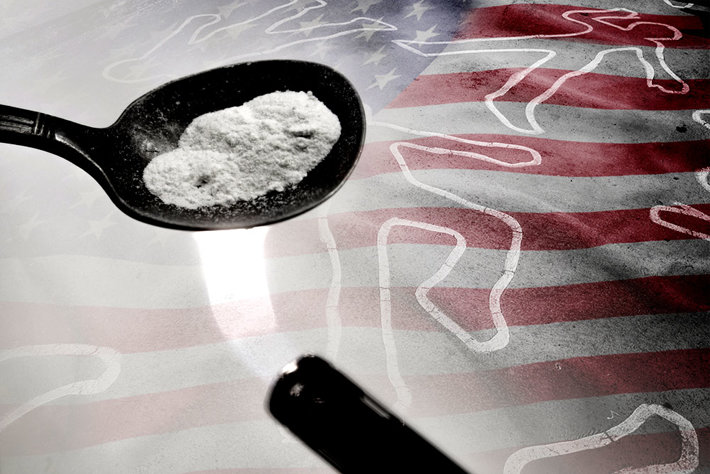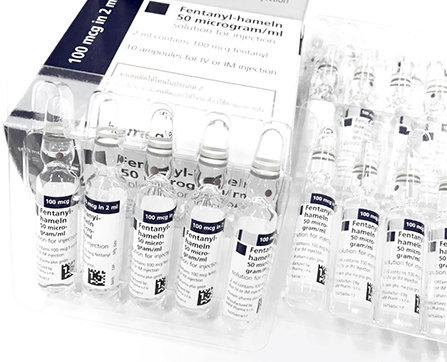Fentanyl, the FDA, and How a Cancer Drug Became the Most Lethal Drug in America

Everyone loves a good conspiracy. Or, we like to think that we do, but we all know that life would be a whole lot better if the conspiracies never happened in the first place. The drama and the subterfuge might be interesting at first, but it always comes at a cost. Take, for example, our nation’s current addiction epidemic. This is perhaps one of the greatest crisis-level emergencies of the 21st-century, and at the very base of it all lies prescription drugs, drugs like fentanyl which are supposed to help us, not hinder us.
How the Fentanyl “Super-Opioid” Came onto the Medical Scene

Fentanyl was originally synthesized only for use with cancer patients who struggled with what is called “breakthrough” pain. Breakthrough pain is a phenomenon where one’s pain level skyrockets far beyond chronic pain levels. Breakthrough pain sometimes exceeds the level that ordinary opioid pain relievers can control, hence the “need” for something stronger.
But here is the problem. For more than a decade, fentanyl drugs that were only ever meant for cancer patients have been prescribed to regular pain patients, non-cancer patients who complained of back pain, migraines, joint pain, jaw pain, toothaches, etc.
In an attempt to impose more strict monitoring of fentanyl distribution and prescribing, and to see that the restrictions on fentanyl were actually followed, the FDA imposed a distribution oversight program in 2011. But the FDA made the most ridiculous mistake they could have when they entrusted the oversight program to the very pharmaceutical companies that make and sell the drugs! This is like hiring known bank robbers and asking them to guard a bank after hours.
The FDA gave the reigns on strict fentanyl monitoring to the very companies that benefit the most from getting fentanyl out to as many people as possible. And to make matters worse, when it became clear that crisis-level fentanyl abuse, addiction, and overdose deaths were still occurring and were in fact worsening, the FDA did little to intervene.
Dr. Andrew Kolodny, an opioid policy researcher and a freedom fighter for safe and ethical opioid prescribing, commented on how the FDA had erred on the side of sheer folly by putting Big Pharma in charge of their own unethical deeds. He said that “If any opioids were going to be tightly regulated, it would be these. They had the fox guarding the henhouse, people were getting hurt — and the F.D.A. sat by and watched this happen.“
Pharmaceutical Manufacturers and Distributors Push Fentanyl on Doctors

The Food and Drug Administration approved fentanyl for outpatient (outside of hospitals) use in 1998. The goal was to allow cancer patients access to pain relievers that would subdue the sudden rushes of pain typically attendant with many types of cancer. But keep in mind that fentanyl sprays, lozenges, and tablets are easily fifty times stronger than heroin and one-hundred times stronger than morphine. It’s the strongest opioid we have that is currently being used for human consumption.
As one can imagine, as soon as fentanyl was allowed for use outside of the controlled and monitored settings of hospital ICUs, overdose fatalities began to climb. The problem was, the drug was simply too potent, and the slightest error with the substance could be fatal. Add to that the fact that opioid manufacturers and distributors began to pressure doctors to prescribe fentanyl to patients who it was never intended for, and we very rapidly had a huge crisis on our hands with fentanyl addiction.
The FDA “Tried” to Stop the Spread of Fentanyl
The FDA made a half-hearted attempt at correcting this flagrant breach of medical ethics and morality, not to mention the law. In 2011, twelve years after fentanyl was approved for out-of-hospital use, the FDA noted that fentanyl prescribing was completely out of control. In response, the FDA formed a risk evaluation and mitigation strategy.
The program had good intentions. The program necessitated doctors to undergo training for ethical and sensible prescribing of fentanyl products. The program outlined how fentanyl manufacturers and distributors were to monitor their products, sending their products only to doctors who specialized in cancer medicine, as well as directions for labeling and marking their products with the proper warnings and prescribing guidelines.
But the problem was, the FDA gave the job to McKesson, one of this country’s largest opioid distributors, a company that had already appeared in court many times for outrageous crimes related to opioid diversion to pill mills, addicts, dealers, etc.
That was obviously a very foolish thing to do. The result was that the watchdog program did not get much done, and unethical, unwarranted fentanyl prescribing continued, but now it continued with a recalcitrant FDA which was unwilling to extend any more effort to do something about it.

Fast forward to present day, and the Johns Hopkins Bloomberg School of Public Health used the Freedom of Information Act to provide the public and media with a five-thousand-page research project on the fentanyl issue. Here is just a glimpse at what they found:
- Forty percent of fentanyl prescribers use the drug to treat non-cancer patients.
- Forty-two percent of pharmacists agree with the doctors who prescribe them, saying that fentanyl is appropriate as a pain reliever for the layman.
- Eighteen percent of fentanyl prescribers admitted that they thought (obviously erroneously) that it was perfectly legal and normal to prescribe fentanyl to non-cancer patients.
- Almost fifty percent of patients had the same misconception.
- More than half of the patients prescribed fentanyl did not meet the “opioid-tolerant” classification, another prerequisite the FDA had placed on fentanyl prescribing.
Clearly, some pretty big mistakes and flagrant violations of our health interests have occurred with fentanyl manufacture, distribution, and prescribing.
Breaking Free from Fentanyl
Clearly, we cannot put our trust in our medical experts, or our lawmakers, as much as we would perhaps like to. We need to take the initiative here, and we need to do our own research and ultimately decide for ourselves which medical options to use for ourselves and our families.
When you or someone you love suffers from chronic pain, consider an alternative approach to pain management over doctor-ordered fentanyl. Holistic pain remedies such as ginger, magnesium, white willow bark, turmeric, valerian root, capsaicin, cat’s claw, and Boswellia can be very helpful. Over-the-counter pain relievers like aspirin, Advil, ibuprofen, Tylenol, etc. can also be workable, as these substances do not usually have opioids in them.
But if you or a family member or loved one must take opioid pain relievers for recovery from a serious accident, injury, illness, or an intensive medical condition, etc., be sure to do your research and determine the least dangerous or risky pain relief solution. Clearly, fentanyl is the most dangerous of pain relief solutions, so that one should be avoided and should only be used under a closely-monitored setting and in a hospital. And last but not least, use opioids as little as possible, for the least amount of time possible. Caution is key here, as no matter what, any and all opioids pose a risk for habit-forming and chemical dependence.
Sources:


 ®
®